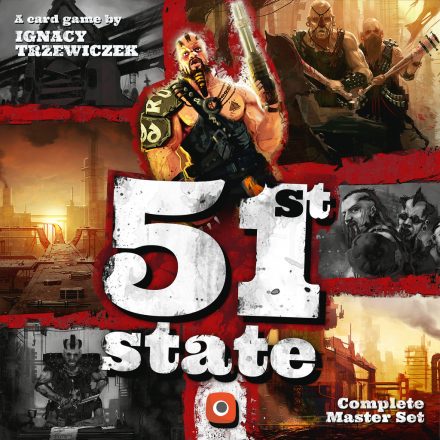The world you know no longer exists. There is no government. No army. No civilization. The United States has collapsed, and now thirty years after the war started, new powers finally try to take control over the ruined country, try to establish a new order, try to control others and create a new country, a new state: the 51st State.
51st State is a card game in which players control one of four powers trying to build a new country. Players put new locations into play, hire leaders, and send people to work in buildings to gain resources and new skills. To do this, every card in 51st State can be used in three different ways:
- Raze a location to gain many resources once.
- Deal with this location to gain one resource every turn.
- Build the location so that you can use its skill each turn.
51st State: Master Set marks the rebirth of the 51st State line, with this set containing 88 cards from the original base game, and 50 cards each from both the New Era and Winter expansions; one of these expansions can be mixed with the cards of the base game, but not both at the same time. The entire set has been rebalanced to offer a cohesive experience no matter which expansion you choose to use.
Game Mechanics:
- City Building
- Economic
- Hand Management
- Open Drafting
- Tableau Building
- Worker Placement
Game Specifications:
- 1 – 4 Players
- 60 – 90 Minutes
- Difficulty Weight 3.90










